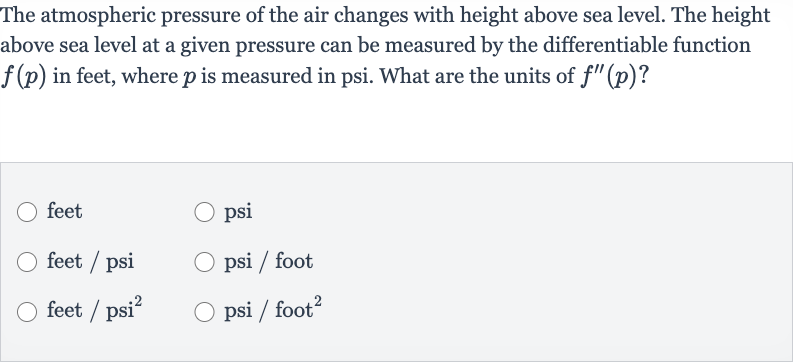AI tutor
Welcome to Bytelearn!
Let’s check out your problem:

The atmospheric pressure of the air changes with height above sea level. The height above sea level at a given pressure can be measured by the differentiable function in feet, where is measured in psi. What are the units of feetpsifeet / psipsi / footfeet psi / foot
Full solution
Q. The atmospheric pressure of the air changes with height above sea level. The height above sea level at a given pressure can be measured by the differentiable function in feet, where is measured in psi. What are the units of feetpsifeet / psipsi / footfeet psi / foot
- Function : The function represents the height above sea level in feet as a function of pressure in psi. The first derivative would represent the rate of change of height with respect to pressure. The units of would therefore be the units of divided by the units of , which is feet per psi (feet/psi).
- First Derivative : The second derivative represents the rate of change of the rate of change of height with respect to pressure. This means we are taking the derivative of with respect to again. To find the units of , we take the units of and divide by the units of again. Since has units of feet/psi, when we take the derivative again with respect to , we get units of (feet/psi) per psi, which simplifies to feet per psi squared (feet/psi).
